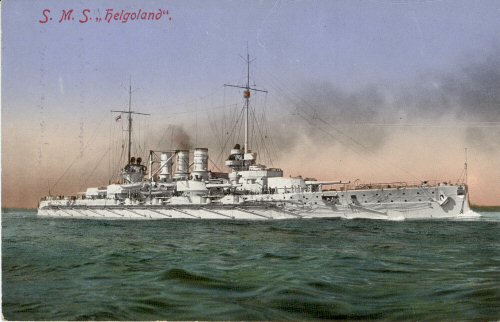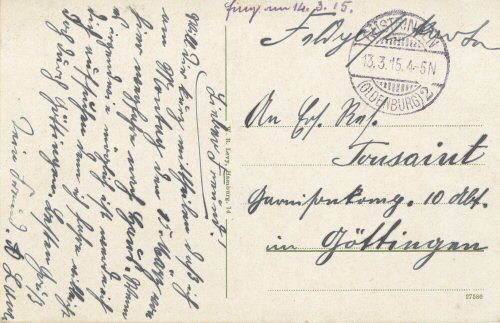
Like the rest of the world, Germany was caught flat-footed by the appearance of the revolutionary HMS Dreadnought in 1906, but Germany had already been working to modify their 1901 design with more armor plating and underwater protection. Using the same turret layout as the large armored cruiser SMS Blücher, designed as a complimentary armoured cruiser, Nassau mounted a uniform armament of 280mm (11") guns in six twin turrets that provided an eight gun broadside (two more than Dreadnought.) The 280mm gun was chosen because a quicker firing gun was thought to be an advantage in the misty North Sea, where long range gunnery duels were thought unlikely, while making the ship beamier than her rivals made them steady platforms for those guns. Unlike British battleships, the German dreadnoughts retained triple expansion steam engines because turbines were not yet deemed reliable enough.
As they were the oldest German battleships, the Nassau and Helgoland classes were not required by the Armistice to sail for Scapa Flow and thus were taken intact after the "Grand Scuttle." In fact, after a serious grounding in the Ålandsee in April 1918, SMS Rheinland was basically decommissioned and served as an accommodations ship. Officially stricken from the Navy List on 5 November 1919, all four ships were surrendered to the Allies and eventually scrapped between 1919-24.
Recognizing that even in a short-range duel the 305mm (12") gun had advantages the RMA began work on an up-gunned successor, SMS Helgoland.
Mounting the larger 305mm (12") gun in the same six turret hexagonal layout as SMS Nassau, the SMS Helgoland and her sisters could be distinguished from other German dreadnoughts by her triple funnels, a design throw-back reminiscent of the pre-dreadnoughts SMS Deutschland and SMS Blücher.
Active throughout the war, the Helgoland's saw action in just about every major naval operation of the war. At The Battle of Jutland they stood in the line, receiving minimal damage (Helgoland and Oldenburg each received 1 hit) and were ready for action within a week, except Ostfriesland which struck a mine while returning and was out of action until late July, 1916.
After the war they were given to the various Allies as prizes. Helgoland went to Britain who used it for various experiments before scrapping her. Ostfriesland was given to the United States and used in the famous U.S. Army Air Corp bombing tests run by General Billy Mitchell. Thüringen went to France and was used as a target ship for the French fleet. Oldenburg was given to Japan who promptly sold it for scrapping in Germany.
Like the Nassau class, the Helgoland's were driven by triple-expansion steam engines, but the RMA had been testing turbines on the light cruiser SMS Lübeck since 1904. Finally realizing that turbines were the way to go, they were incorporated into the next class of German dreadnoughts, SMS Kaiser.
SMS Helgoland took part in The Battle of Jutland
